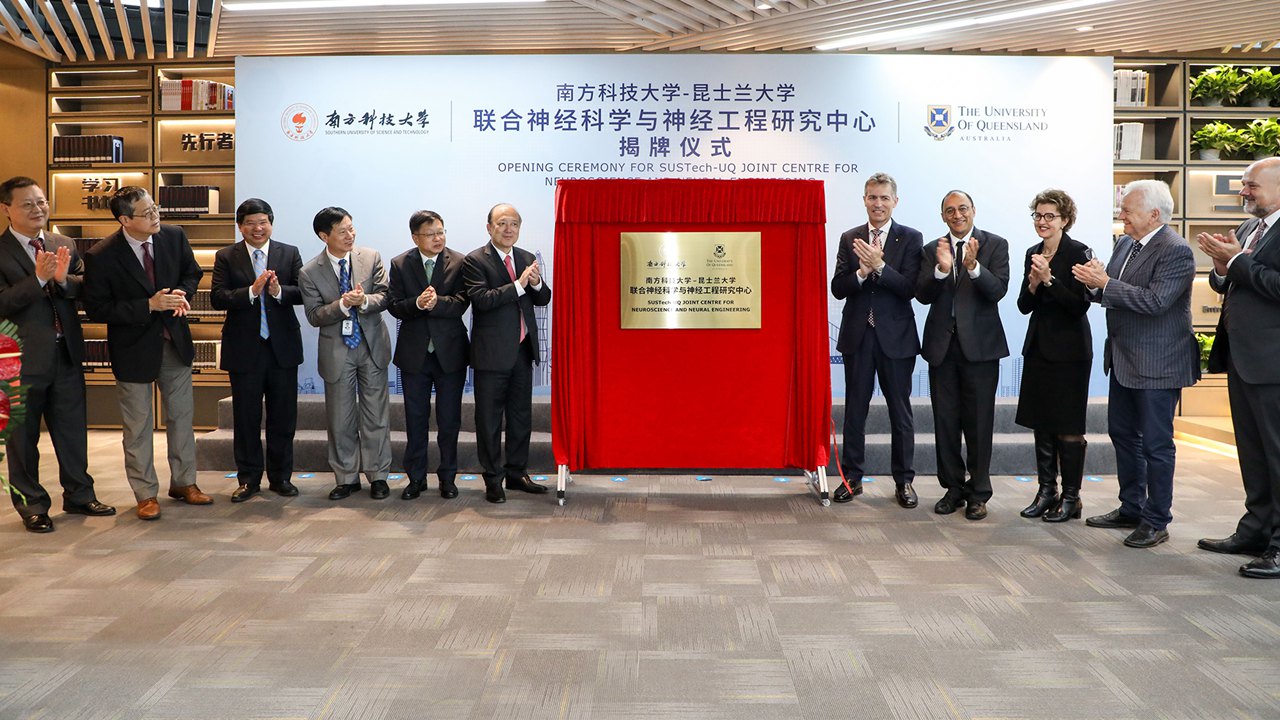Neuroscience center inaugurated
Writer: Han Ximin | Editor: Holly Wang | From: Shenzhen Daily

Chen Shiyi (6th L), president of SUSTech, and Peter Høj (5th R), vice chancellor and president of University of Queensland, along with guests attending the inaugural ceremony, inaugurate the Joint Center for Neuroscience and Neural Engineering at the ceremony at SUSTech yesterday. Courtesy of SUSTech
SUSTECH inaugurated the Joint Center for Neuroscience and Neural Engineering with the University of Queensland (UQ) at a ceremony in SUSTech yesterday.
A milestone collaboration between SUSTech and UQ, the center will flesh out research directions in neurocircuit computation, regulating neurocircuits to restore function following stroke, neuromodulation, connectomics and neuromorphic computers.
It is composed of world-leading teams of basic research scientists and engineers who will build on the collective research strengths of SUSTech and UQ to enhance the understanding of the computational operations performed by defined neuronal circuits, develop neuro-inspired next-generation computational architectures and devices, and develop strategies for the treatment and repair of damaged nervous systems.
“The center has been established to tackle a fundamental question, that is, how the human brain operates and how it delivers amazing capacity. It will bring together the expertise and drive the technologies to enable both a mechanistic understanding of the human brain, and the immediate translation of basic science into health care, and computational technology benefits,” said Chen Shiyi, president of SUSTech, at the opening ceremony.
At an interview with Prof. Peter Hoj, vice chancellor and president of UQ, Hoj said that the brain is the last frontier of science and it needs to be understood and requires world collaboration.
“The center is built on friendship and mutual understanding. Through the center, UQ and SUSTech are trying to understand much more about the function of brain and will be able to treat brain-related diseases that the society is facing like stroke, depression and senile dementia,” said Hoj.
The establishment of the joint center will serve as a platform to promote continued educational collaborations between the two universities.
The center will also be initiating the “2+2” program. A cohort of 10 students will be recruited in the first year with a goal to reach 40-50 undergraduate students enrolled in the program.
Cooperation between the two universities began in 2015 with Chen’s visit to Queensland.
So far, the two universities have developed a joint doctoral degree program in areas ranging from brain science to engineering, two 3+2 degree programs with mechanical engineering and electronic engineering covering four majors, and a 3+1+X program in engineering.